标签:编写 bison family 状态 tps binary inf 配置 汇编
找一个系统调用,系统调用号为学号最后2位相同的系统调用,我的学号32.
通过汇编指令触发该系统调用
通过gdb跟踪该系统调用的内核处理过程
重点阅读分析系统调用入口的保存现场、恢复现场和系统调用返回,以及重点关注系统调用过程中内核堆栈状态的变化
1、安装开发工具
sudo apt install build-essential sudo apt install qemu # install QEMU sudo apt install libncurses5-dev bison ?ex libssl-dev libelf-dev
2、下载内核源码
sudo apt install axel axel -n 20 https://mirrors.edge.kernel.org/pub/linux/kernel/v5.x/linux-5.4.34.tar.xz xz -d linux-5.4.34.tar.xz tar -xvf linux-5.4.34.tar cd linux-5.4.34
3、配置内核选项
make defconfig #Default configuration is based on ‘x86_64_defconfig‘ make menuconfig #打开debug相关选项 Kernel hacking ---> Compile-time checks and compiler options ---> [*] Compile the kernel with debug info [*] Provide GDB scripts for kernel debugging
[*] Kernel debugging #关闭KASLR,否则会导致打断点失败 Processor type and features ----> [] Randomize the address of the kernel image (KASLR)

4、编译和运?内核
make -j$(nproc) # nproc gives the number of CPU cores/threads available # 测试?下内核能不能正常加载运?,因为没有?件系统终会kernel panic qemu-system-x86_64 -kernel arch/x86/boot/bzImage #此时不能正常运行
5、制作根文件系统
axel -n 20 https://busybox.net/downloads/busybox-1.31.1.tar.bz2 tar -jxvf busybox-1.31.1.tar.bz2 cd busybox-1.31.1 make menuconfig #记得要编译成静态链接,不?动态链接库。 Settings ---> [*] Build static binary (no shared libs) #然后编译安装,默认会安装到源码?录下的 _install ?录中。 make -j$(nproc) && make install
6、制作内存根文件系统镜像
mkdir rootfs cd rootfs cp ../busybox-1.31.1/_install/* ./ -rf mkdir dev proc sys home sudo cp -a /dev/{null,console,tty,tty1,tty2,tty3,tty4} dev/
7、准备init脚本文件放在根文件系统跟目录下(rootfs/init),添加如下内容到init文件
#!/bin/sh mount -t proc none /proc mount -t sysfs none /sys echo "Wellcome MyOS!" echo "--------------------" cd home /bin/sh
8、给init脚本添加可执行权限
chmod +x init
9、打包成内存根文件系统镜像并
find . -print0 | cpio --null -ov --format=newc | gzip -9 > ../ rootfs.cpio.gz
#测试挂载根?件系统,看内核启动完成后是否执?init脚本
# cd.. 退到rootfs.cpio.gz所在的目录
qemu-system-x86_64 -kernel linux-5.4.34/arch/x86/boot/bzImage -initrd rootfs.cpio.gz
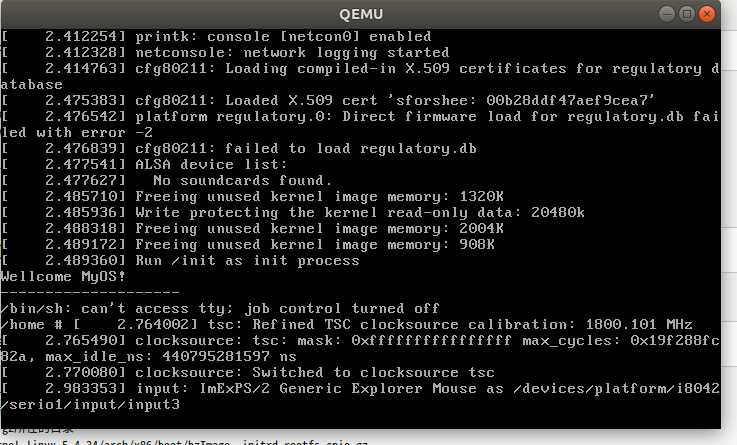
1、打开/linux-5.4.34/arch/x86/entry/syscalls/syscall_64.tbl,找到自己学号后两位32对应的系统调用命令:dup(dup返回的文件描述符总是取最小的可用值)
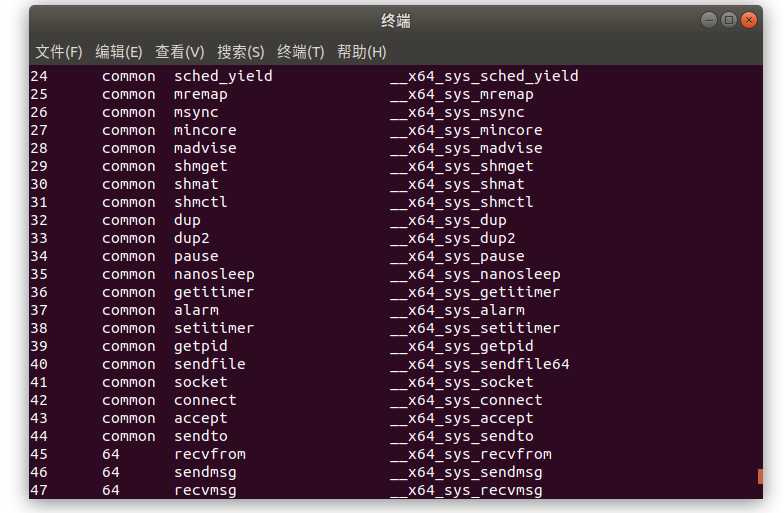
2、编写test_dup.c程序,调用32号系统调用
int main() { asm volatile( "movl $0x20,%eax\n\t" //使?EAX传递系统调?号32 "syscall\n\t" //触发系统调? ); return 0; }
3、使用gcc静态编译,并重新打包
gcc -o test_dup test_dup.c -static find . -print0 | cpio --null -ov --format=newc | gzip -9 > ../rootfs.cpio.gz
4、进行gdb调试
qemu-system-x86_64 -kernel linux-5.4.34/arch/x86/boot/bzImage -initrd rootfs.cpio.gz -S -s -nographic -append "console=ttyS0" #开启新的terminal cd linux-5.4.34 gdb vmlinux target remote:1234 #设置断点 b __x64_sys_dup
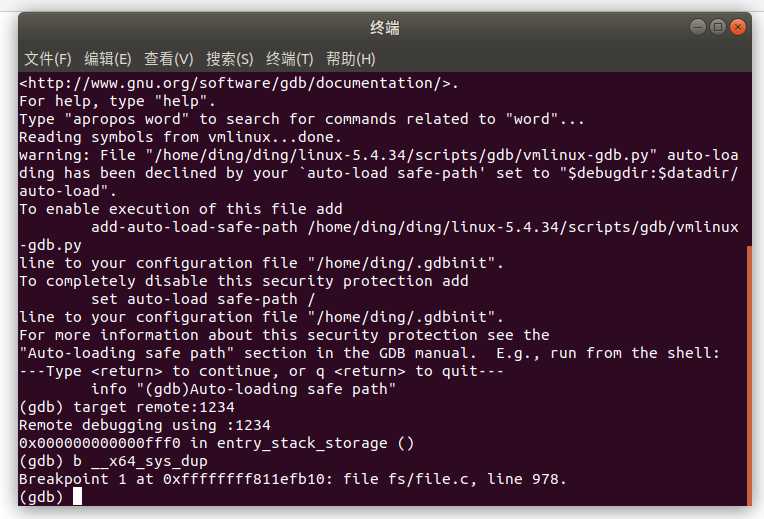
5、通过命令c来继续运行,通过n来实现gdb单步调试
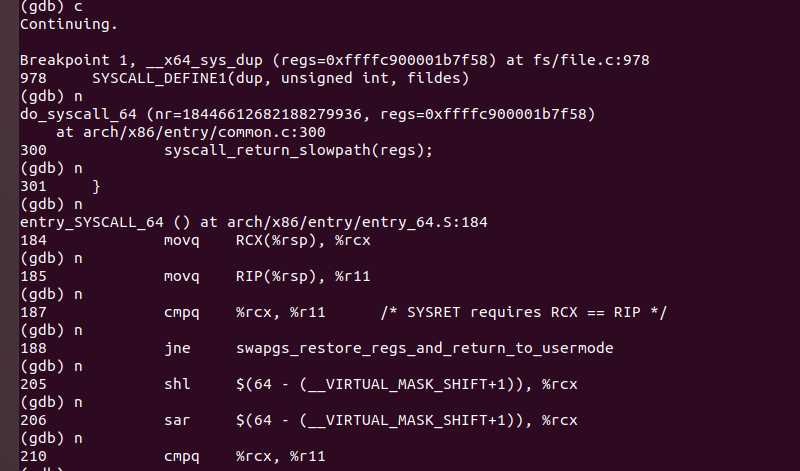
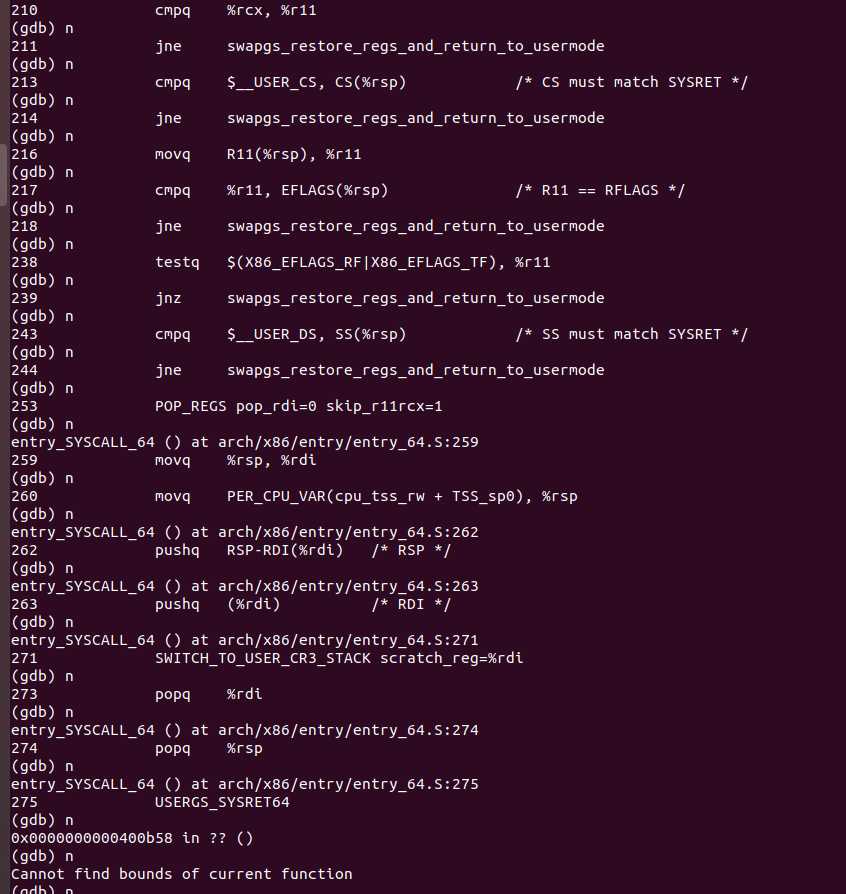
6、通过bt可观察当前堆栈信息

四、实验结果分析
通过最终的堆栈信息如下
首先断点定位到位于fs/file的第978行

其次查看do_syscall_64,在at arch/x86/entry/common.c的第290行

然后查看entry_syscall_64,在arch/x86/entry/entry_64.S的第175行
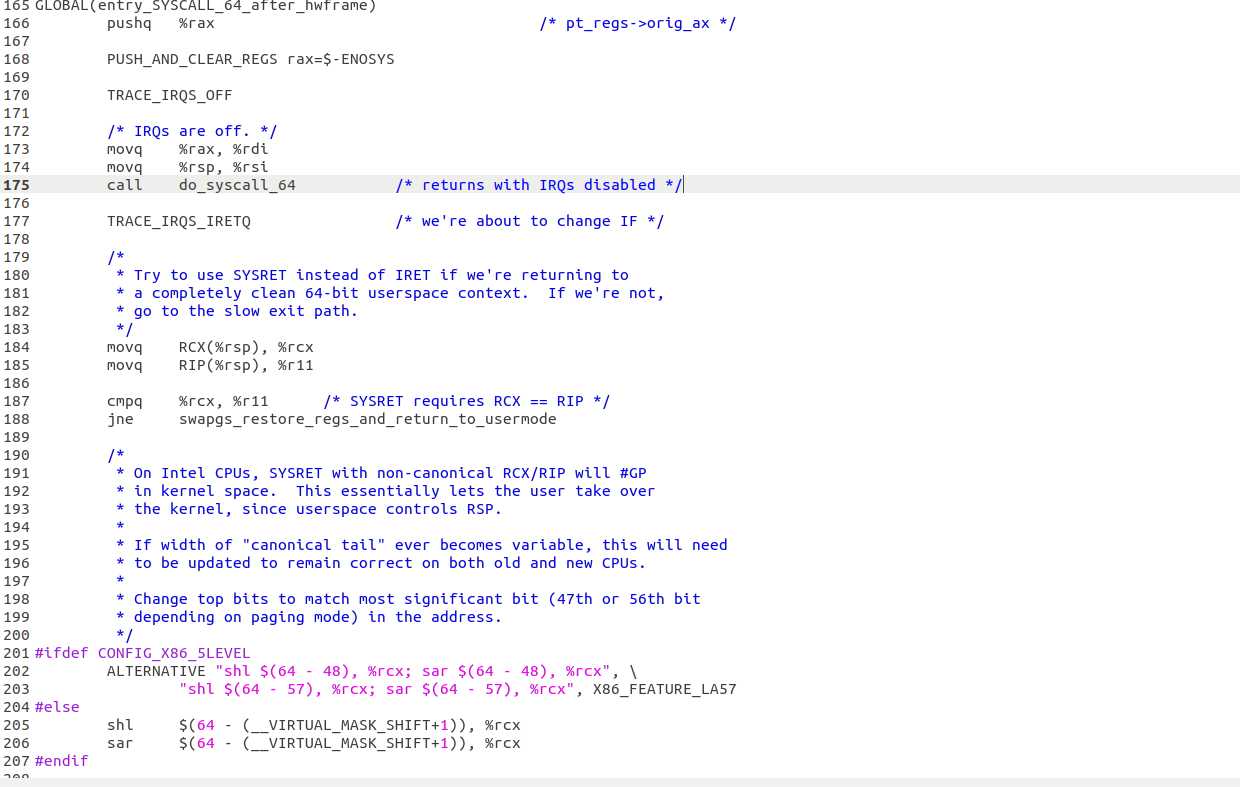
根据单步调试结果,印证了堆栈结果:

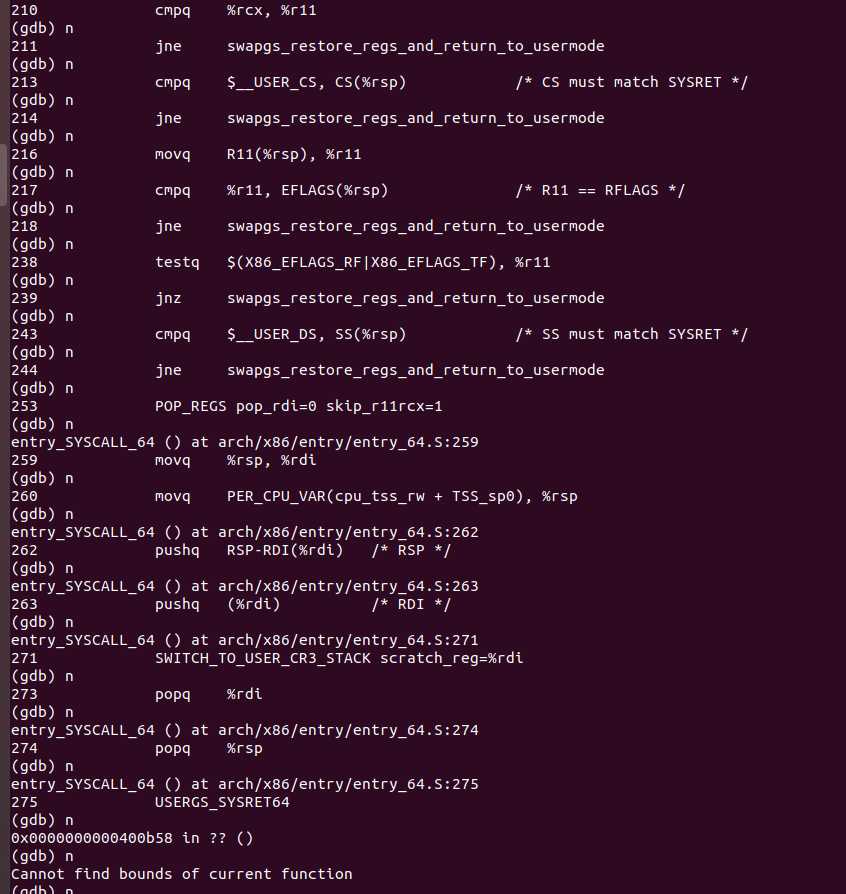
最终总结一下整个过程:
标签:编写 bison family 状态 tps binary inf 配置 汇编
原文地址:https://www.cnblogs.com/logan233/p/12972732.html